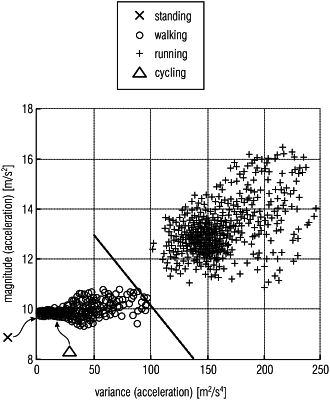| CPC G06N 5/04 (2013.01) [G01C 21/28 (2013.01); G01S 19/25 (2013.01); G01S 19/252 (2013.01); G06F 17/18 (2013.01); H04W 4/027 (2013.01); H04W 4/029 (2018.02)] | 17 Claims |

|
1. An apparatus for estimating a physical state of a movable object, the apparatus comprising a processor, wherein the processor is configured to receive or determine a probability mass function comprising probabilities for each movement class of a first group of at least two movement classes, wherein the movement classes of the first group being determined using sensor data from the inertial measurement unit of the movable object;
receive at least one additional probability mass function associated with a second group of at least two movement classes, wherein the additional probability mass function has been acquired using additional information different from the sensor data; combine the probability mass function and the at least one additional probability mass function to acquire a combined probability mass function over the movement classes of the first group and the second group;
select a movement class comprising the highest probability from the combined probability mass function; and estimate the physical state of the movable object using a movement model of the selected movement class, wherein each movement class is either a movement state or a movement model, and wherein the additional information different from the sensor data concerns information from other devices in the vicinity of the object determined via device to device (D2D) data exchanged directly with the other devices.
|